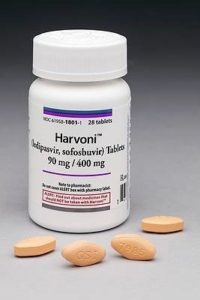Intravenous drug use within the rural prison population
This is the fifth post in a series of short topic snapshots, prepared by Joseph Loades, a research student with the Centre for Rural Criminology at the University of New England.
Drug and alcohol use and misuse is an issue within rural areas which is related to the rising rate of drug crime, violence, and property crimes seen in rural and remote areas. Many prisoners from rural and remote areas enter the prison system with an issue of drug-use through the means of intravenous injection.
 Despite drugs and drug paraphernalia being illegal within prisons, there continues to be an issue concerning prisoners injecting drugs whilst incarcerated, and contracting blood borne diseases throughout their period of confinement.
Despite drugs and drug paraphernalia being illegal within prisons, there continues to be an issue concerning prisoners injecting drugs whilst incarcerated, and contracting blood borne diseases throughout their period of confinement.
Donnermayer et al. (2002) explain the complex link between social and economic adversities, and the use of drug and alcohol within many rural and remote communities in Australia. The results of Donnermayer et al. study showed a clear relationship between peer association, drug use, and drug related crimes, which in many cases resulted in the incarceration of drug users. Unfortunately, when these offenders reach the prison system, in many cases, their drug abuse escalates.
When people incarcerated for drug related crimes enter the prison system, they have the capability of continuing their drug habits. Cunningham et al. (2018) explain that although the number of drug users decline once they are incarcerated, many are initiated into intravenous drug use, and many continue their habits.
Most concerning, of those that inject drugs within prison, the rate of needle sharing increases from what is seen within rural communities, particularly amongst the younger generation of prisoners, who are at risk of contracting HIV and Hepatitis C Virus (HCV), which affects a great deal of the prison population within Australia (almost half people who inject within prison being HCV antibody positive). Despite this alarming statistic, needle syringe programs (NSP) and opioid substitution therapies (OST) are not available within prisons.
 Australia is moving toward the World Health Organization (WHO) goal of eliminating the prevalence of HCV within prisons by 2030, with the implementation of DAA, current OST trials, and discussions on the introduction of NSP (Bretana et al., 2020).
Australia is moving toward the World Health Organization (WHO) goal of eliminating the prevalence of HCV within prisons by 2030, with the implementation of DAA, current OST trials, and discussions on the introduction of NSP (Bretana et al., 2020).
In March, 2016, the Pharmaceutical Benefits Scheme listed direct-acting antiviral (DAA) therapies for HCV infection, allowing those infected, including prisoners, with HCV to access DAA treatment regardless of how they acquired their illness (Papaluca et al., 2019).
Bretana et al. (2020) explain that DAA treatment has showed remarkable results, although the trials only accounted for 20% of all prisoners with HCV. To efficiently reduce HCV, DAA trials would need to be increased significantly.
The trial of OST’s has not shown improvements in the rate of HCV. Reasons for this include insufficient dosing, and the delay in treatment when prisoners are first incarcerated. Although NSP’s have shown modest results on the international stage, Australia has been reluctant to trial this method.
It is apparent that, to meet the WHO goal of successfully reducing HCV by 2030, to improve the health of rural prisoners whilst incarcerated, and to improve the wellbeing of this cohort, the continued and increased use of DAA, the continued and improved trials of OST’s, and the introduction of NSP’s, are needed within Australian correctional facilities within the future.
(Images sourced through pixels.com)
References
Bretaña, N. A., Gray, R. R., Cunningham, E. B., Betz‐Stablein, B., Ribeiro, R., Graw, F., Luciani, F. & Lloyd, A. R. (2020). Combined treatment and prevention strategies for hepatitis C virus elimination in the prisons in New South Wales: a modelling study. Addiction, 115(5), 901-913. https://stopc.org/wp-content/uploads/2020/11/Bretana-et-al_2020.pdf
Cunningham, E. B., Hajarizadeh, B., Amin, J., Bretana, N., Dore, G. J., Degenhardt, L., Larney, s., Luciani, F., Lloyd, A. R., Grebely, J. & HITS-p Investigators. (2018). Longitudinal injecting risk behaviours among people with a history of injecting drug use in an Australian prison setting: the HITS-p study. International Journal of Drug Policy, 54, 18-25. https://stopc.org/wp-content/uploads/2021/03/Cunningham-2018_Longitudianal.pdf
Donnermeyer, J. F., Barclay, E. M. & Jobes, P. C. (2002). Drug-related offenses and the structure of communities in rural Australia. Substance use & misuse, 37(5-7), 631-661. https://www.tandfonline.com/doi/abs/10.1081/JA-120004277
Papaluca, T., Hellard, M. E., Thompson, A. J. & Lloyd, A. R. (2019). Scale‐up of hepatitis C treatment in prisons is key to national elimination. Medical Journal of Australia, 210(9), 391-393. https://www.mja.com.au/system/files/issues/210_09/mja250140.pdf

